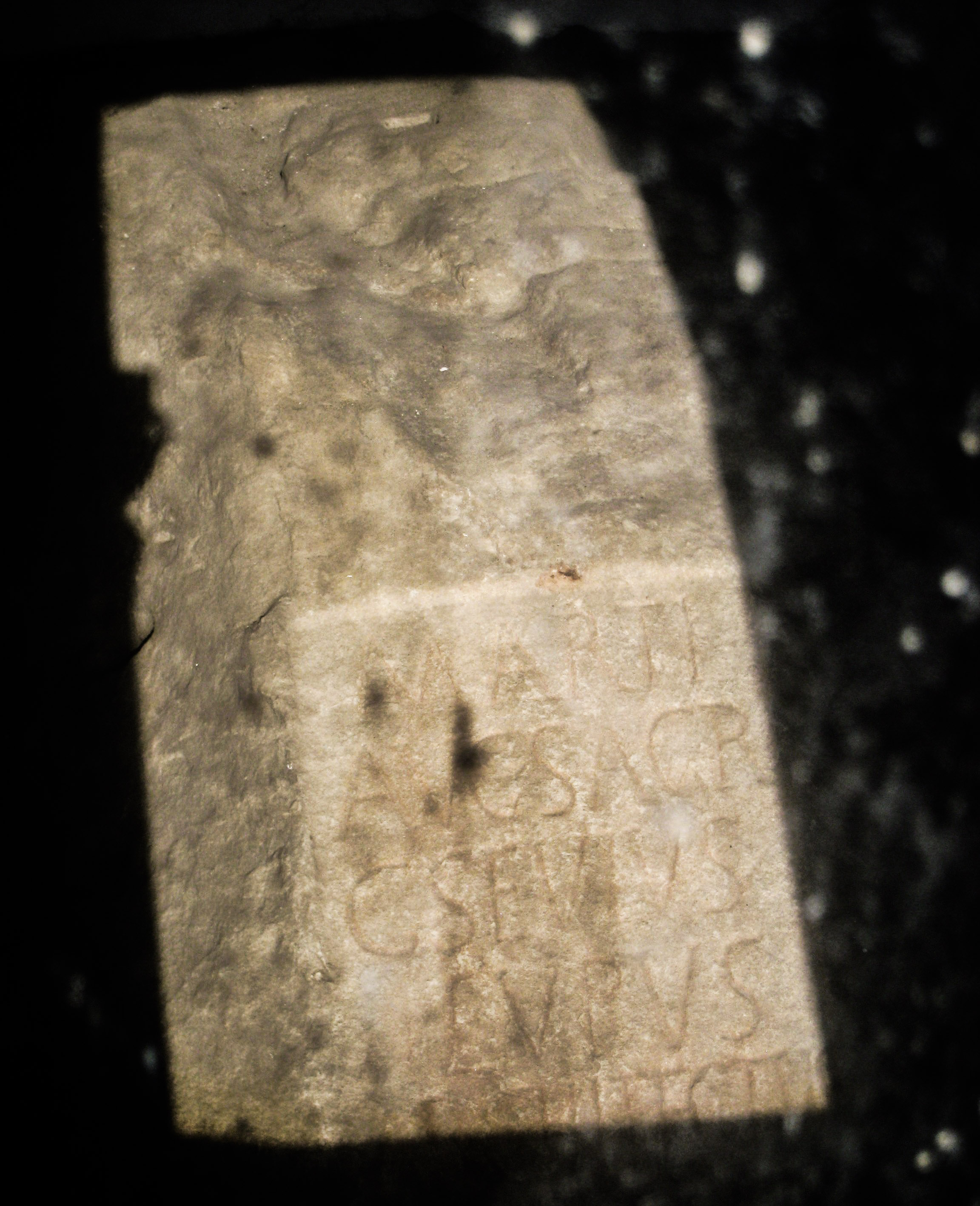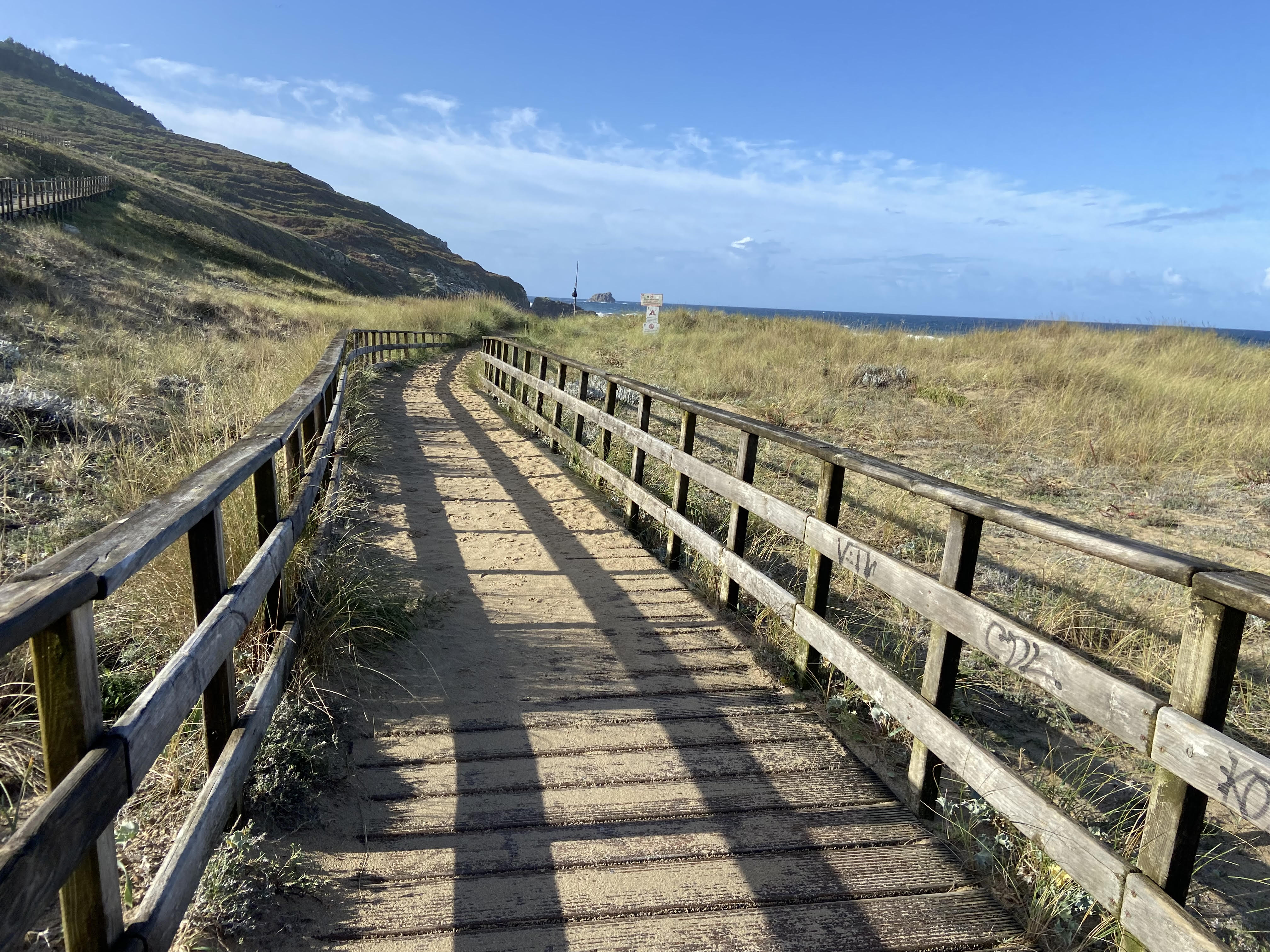|
Tower Of Hercules
The Tower of Hercules (, ) is the oldest known extant Roman lighthouse. Built in the 1st century, the tower is located on a peninsula about from the center of A Coruña, Galicia, in northwestern Spain. Until the 20th century, it was known as the Farum Brigantium. The :wiktionary:pharus#Latin, Latin word ''farum'' is derived from the Greek :wiktionary:Φάρος, Φάρος, ''Pharos'', for the Lighthouse of Alexandria. The structure stands tall and overlooks the North Atlantic coast of Spain. The tower was renovated in 1791. There is a sculpture garden on the grounds of the lighthouse featuring works by Pablo Serrano and . The Tower of Hercules is a National Monument (Spain), National Monument of Spain and has been a UNESCO World Heritage Sites in Spain, UNESCO World Heritage Site since 27 June 2009.UNESCO websiteof Hercules/ref> It is the second-tallest lighthouse in Spain, after the Chipiona Light, Faro de Chipiona. Construction and history The tower is known to have existed ... [...More Info...] [...Related Items...] OR: [Wikipedia] [Google] [Baidu] [Amazon] |
Finisterra
Cape Finisterre (, also ; ; ) is a rock-bound peninsula on the west coast of Galicia, Spain. In Roman times it was believed to be an end of the known world. The name Finisterre, like that of Finistère in France, derives from the Latin , meaning "end of the earth". It is sometimes said to be the westernmost point of the Iberian Peninsula. However, Cabo da Roca in Portugal is about farther west and thus the westernmost point of continental Europe. Even in Spain Cabo Touriñán is 124 metres (135 yards) farther west. Monte Facho is the name of the mountain on Cape Finisterre, which has a peak that is above sea level. A prominent lighthouse is at the top of Monte Facho. The seaside town of Fisterra is nearby. The Artabri were an ancient Gallaecian Celtic tribe that once inhabited the area. Geography Cape Finisterre has several beaches, including O Rostro, Arnela, Mar de Fora, Langosteira, Riveira, and Corbeiro. Many of the beaches are framed by steep cliffs leading down t ... [...More Info...] [...Related Items...] OR: [Wikipedia] [Google] [Baidu] [Amazon] |
Charles III Of Spain
Charles III (; 20 January 1716 – 14 December 1788) was King of Spain in the years 1759 to 1788. He was also Duke of Parma and Piacenza, as Charles I (1731–1735); King of Naples, as Charles VII; and King of Sicily, as Charles III (or V) (1735–1759). He was the fourth son of Philip V of Spain and the eldest son of Philip's second wife, Elisabeth Farnese. He was a proponent of enlightened absolutism and regalism. In 1731, the 15-year-old Charles became Duke of Parma and Piacenza following the death of his childless grand-uncle Antonio Farnese, Duke of Parma, Antonio Farnese. In 1734, at the age of 18, he led Spanish troops in a bold and almost entirely bloodless march down Italy to seize the Kingdom of Naples and Kingdom of Sicily and enforce the Spanish claim to their thrones. In 1738, he married the Princess Maria Amalia of Saxony, daughter of Augustus III of Poland, who was an educated, cultured woman. The couple had 13 children, eight of whom reached adulthood. They resided ... [...More Info...] [...Related Items...] OR: [Wikipedia] [Google] [Baidu] [Amazon] |
Torre De Hércules Plan
''Torre'' (plurals ''torri'' and ''torres'') means ''tower'' in seven Romance languages (Portuguese, Spanish, Galician, Catalan, Italian, Occitan and Corsican) and may refer to: Biology * Muir-Torre syndrome, the inherited cancer syndrome * ''Sypharochiton torri'', a mollusc Chess * Carlos Torre Repetto, Mexican chess grandmaster ** Torre Attack, an opening in chess * Eugenio Torre (born 1951), Filipino chess grandmaster * An alternative name for a rook in chess Places Brazil * Torre, a neighborhood in the metropolitan area of Recife England * Torre, Torquay, an area of Torquay in Devon * Torre, Somerset, a hamlet in the county of Somerset France * Torre, Corsica Italy * Torre Annunziata, a comune in the province of Naples in the region of Campania * Torre Archirafi, a frazione in the comune of Riposto in the province of Catania in the region of Sicily * Torre Boldone, a comune in the province of Bergamo in the region of Lombardy * Torre Bormida, a comune ... [...More Info...] [...Related Items...] OR: [Wikipedia] [Google] [Baidu] [Amazon] |
Roman Britain
Roman Britain was the territory that became the Roman province of ''Britannia'' after the Roman conquest of Britain, consisting of a large part of the island of Great Britain. The occupation lasted from AD 43 to AD 410. Julius Caesar invaded Britain in 55 and 54 BC as part of his Gallic Wars. According to Caesar, the Britons had been overrun or culturally assimilated by the Belgae during the British Iron Age and had been aiding Caesar's enemies. The Belgae were the only Celtic tribe to cross the sea into Britain, for to all other Celtic tribes this land was unknown. He received tribute, installed the friendly king Mandubracius over the Trinovantes, and returned to Gaul. Planned invasions under Augustus were called off in 34, 27, and 25 BC. In 40 AD, Caligula assembled 200,000 men at the Channel on the continent, only to have them gather seashells () according to Suetonius, perhaps as a symbolic gesture to proclaim Caligula's victory over th ... [...More Info...] [...Related Items...] OR: [Wikipedia] [Google] [Baidu] [Amazon] |
Gallaecia
Gallaecia, also known as Hispania Gallaecia, was the name of a Roman province in the north-west of Hispania, approximately present-day Galicia, northern Portugal, Asturias and Leon and the later Kingdom of Gallaecia. The Roman cities included the port Cale (Porto), the governing centers Bracara Augusta (Braga), Lucus Augusti (Lugo) and Asturica Augusta (Astorga) and their administrative areas Conventus bracarensis, Conventus lucensis and Conventus asturicensis. Description The Romans named the northwest part of Hispania or the Iberian Peninsula ''Gallaecia'' after the Celtic tribes of the area the Gallaeci or Gallaecians. The Gallaic make their entry into written history in the first-century epic ''Punica'' of Silius Italicus on the First Punic War: (Book III pp. 344–347) "Rich Gallaecia sent its youths, wise in the knowledge of divination by the entrails of beasts, by feathers and flames—who, now crying out the barbarian song of their n ... [...More Info...] [...Related Items...] OR: [Wikipedia] [Google] [Baidu] [Amazon] |
Hispania
Hispania was the Ancient Rome, Roman name for the Iberian Peninsula. Under the Roman Republic, Hispania was divided into two Roman province, provinces: Hispania Citerior and Hispania Ulterior. During the Principate, Hispania Ulterior was divided into two new provinces, Baetica and Lusitania, while Hispania Citerior was renamed Hispania Tarraconensis. Subsequently, the western part of Tarraconensis was split off, initially as Hispania Nova, which was later renamed "Callaecia" (or Gallaecia, whence modern Galicia (Spain), Galicia). From Diocletian's Tetrarchy (AD 293) onwards, the south of the remainder of Tarraconensis was again split off as Hispania Carthaginensis, Carthaginensis, and all of the mainland Hispanic provinces, along with the Hispania Balearica, Balearic Islands and the North African province of Mauretania Tingitana, were later grouped into a Roman diocese, civil diocese headed by a ''vicarius''. The name Hispania was also used in the period of Visigothic Kingdom, ... [...More Info...] [...Related Items...] OR: [Wikipedia] [Google] [Baidu] [Amazon] |
Paulus Orosius
Paulus Orosius (; born 375/385 – 420 AD), less often Paul Orosius in English, was a Roman priest, historian and theologian, and a student of Augustine of Hippo. It is possible that he was born in ''Bracara Augusta'' (now Braga, Portugal), then capital of the Roman province of Gallaecia, which would have been the capital of the Kingdom of the Suebi by his death. Although there are some questions regarding his biography, such as his exact date of birth, it is known that he was a person of some prestige from a cultural point of view, as he had contact with the greatest figures of his time such as Augustine of Hippo and Jerome of Stridon. In order to meet with them Orosius travelled to cities on the southern coast of the Mediterranean Sea, such as Hippo Regius, Alexandria, and Jerusalem. These journeys defined his life and intellectual output. Orosius did not just discuss theological matters with Augustine; he also collaborated with him on the book '' City of God''. In addition, ... [...More Info...] [...Related Items...] OR: [Wikipedia] [Google] [Baidu] [Amazon] |
Mars (mythology)
In ancient Roman religion and Roman mythology, mythology, Mars (, ) is the god of war and also an Roman agriculture, agricultural guardian, a combination characteristic of early ancient Rome, Rome. He is the son of Jupiter (mythology), Jupiter and Juno (mythology), Juno, and was pre-eminent among the Religion in the Roman military, Roman army's military gods. Most of his Roman festivals, festivals were held in March, the month named for him (Martius (month), Latin ''Martius''), and in October, the months which traditionally began and ended the season for both military campaigning and farming. Under the Hellenization, influence of Greek culture, Mars was interpretatio graeca, identified with the Greek mythology, Greek god Ares,''Larousse Desk Reference Encyclopedia'', The Book People, Haydock, 1995, p. 215. whose myths were reinterpreted in Latin literature, Roman literature and Roman art, art under the name of Mars. The character and dignity of Mars differs in fundamental ways fr ... [...More Info...] [...Related Items...] OR: [Wikipedia] [Google] [Baidu] [Amazon] |
Lusitania
Lusitania (; ) was an ancient Iberian Roman province encompassing most of modern-day Portugal (south of the Douro River) and a large portion of western Spain (the present Extremadura and Province of Salamanca). Romans named the region after the Lusitanians, an Proto-Indo-Europeans, Indo-European tribe inhabiting the lands. The capital Emerita Augusta was initially part of the Roman Republic province of Hispania Ulterior before becoming a province of its own during the Roman Empire. After Romans arrived in the territory during the 2nd century BC, a Lusitanian War, war with Lusitanian tribes ensued between 155 and 139 BC, with the Roman province eventually established in 27 BC. In modern parlance, ''Lusitania'' is often synonymous with Portugal, despite the province's capital being located in modern Mérida, Spain. Etymology The etymology of the name of the Lusitanians, Lusitani (who gave the Roman province its name) remains unclear. Popular etymology connected the name to ... [...More Info...] [...Related Items...] OR: [Wikipedia] [Google] [Baidu] [Amazon] |
Coimbra
Coimbra (, also , , or ), officially the City of Coimbra (), is a city and a concelho, municipality in Portugal. The population of the municipality at the 2021 census was 140,796, in an area of . The fourth-largest agglomerated urban area in Portugal after Lisbon Metropolitan Area, Lisbon, Porto Metropolitan Area, Porto, and Braga, it is the largest city of the Coimbra (district), district of Coimbra and the Centro Region, Portugal, Centro Region. About 460,000 people live in the Região de Coimbra, comprising 19 municipalities and extending into an area of . Among the many archaeological structures dating back to the Roman Empire, Roman era, when Coimbra was the settlement of Aeminium, are its well-preserved aqueduct (watercourse), aqueduct and cryptoporticus. Similarly, buildings from the period when Coimbra was the capital of Portugal (from 1131 to 1255) still remain. During the late Middle Ages, with its decline as the political centre of the Kingdom of Portugal, Coimbra beg ... [...More Info...] [...Related Items...] OR: [Wikipedia] [Google] [Baidu] [Amazon] |





